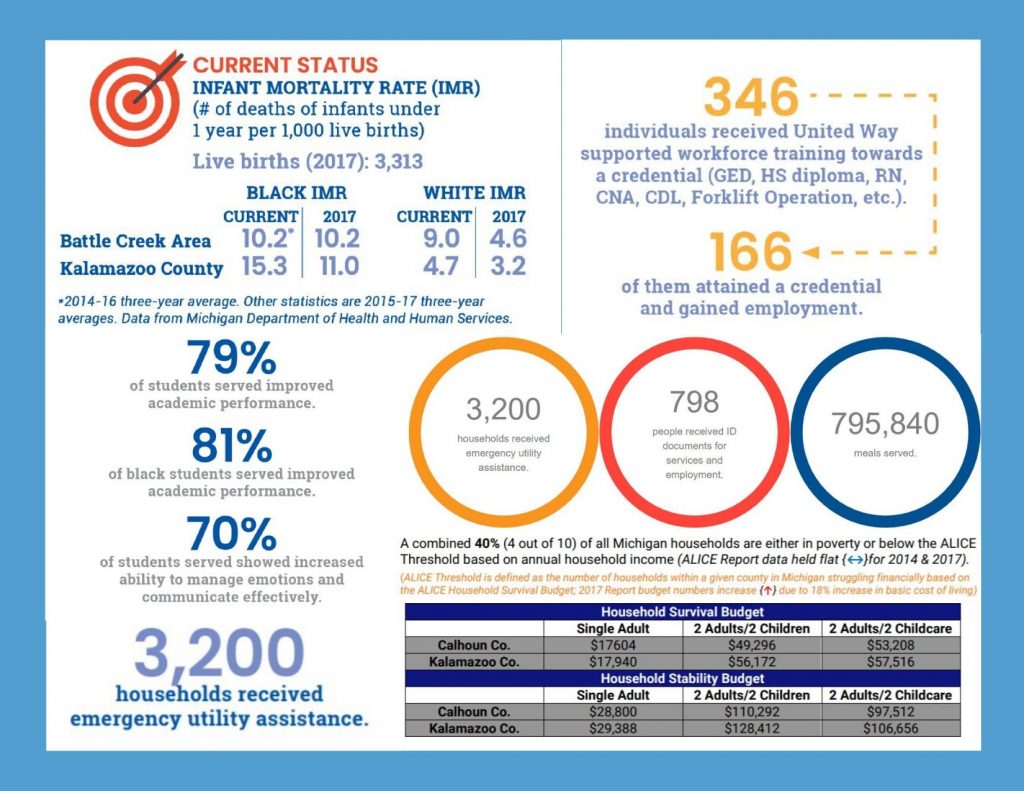Impact Week: Data’s Role in Driving Impact
December 2, 2019

Editor’s note: This is the first story in a week-long series exploring the meaning of impact in our organization.
At United Way, we talk a lot about impact. The word appears in our mission statement, on the cover of our annual report, in our culture statement, and so many more places in the organization.
But how do we drive impact and what exactly do we mean by that? The answer is complex, because the issues people all across our community face are complex. Last week, UWBCKR President & CEO Chris Sargent wrote about how our organization drives impact by leading shared efforts.
Data can also tell a piece of the story.
At United Way, we use data in many ways, but there are two in particular at the heart of impact: 1) collecting and analyzing data to direct and inform our grantmaking and initiative work; 2) compiling and sharing it to get a better view of our collective impact.
When a partner organization receives funding, they make a commitment to report information back to our community impact team, including demographics, number of people served, and other key indicators relevant to their programs. This helps ensure that we’re serving the populations that we’ve committed to serving, informs us about the environment we and our partners are operating in, and tells us where there are gaps.
“It also helps us understand trends that are outside of the funding that we’re doing,” Laurel Clark, Associate Director of Community Impact, said. “For instance, for basic needs, we are able to see when there’s a huge shift in policy or where money is being placed in the federal government and how that impacts the work that our organizations are doing.”
The second way we use data is to combine what we collect from partners and share it out, being transparent about where we’re making strides and where we need to make adjustments. These are the types of numbers that you’ll see in our Impact Report. Recently, we’ve begun to compile the data to share back with our partner organizations in a way that allows them to compare and collaborate with others doing similar work or aiming for the same outcomes.
“For us, data is a way for us to get on the same page with our partners as far as what we’re seeing and how we can support them,” Clark said.
Data can also inform us on progress toward our long-term goals in Health, Education, Financial Stability and Basic Needs, though Clark points out that it can be complex to measure.
“With data, we can see how we’re moving toward those goals, but we also understand that we are part of larger systems, and a lot of those systems are putting up barriers,” Clark said.
That’s why in addition to grantmaking, United Way is involved in initiative work that deals with public policy and advocacy. You’ll learn more about some of those initiatives on Thursday.
“It’s where we can, as a united front, call up certain policies that are affecting those who we’re trying to support,” Clark said.
The issues in our community can be complex, but joining us to create long-lasting change doesn’t have to be. Your dollars have real impact. The more you can give, the more we can accomplish together. Please consider making a gift this week. Donations made during on Giving Tuesday will be matched up to $2,000, and will go toward making sure basic needs – things like food, shelter and heat – are met this season for people in Battle Creek and Kalamazoo.
![]()
Posted in BC/Kzoo, BC/Kzoo General
